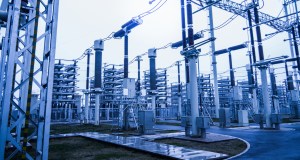Watson for wattage? IBM improves solar, wind power forecasts

IBM’s platform improves solar forecasts by 30 percent, which can greatly improve the efficiency of renewable energy. (Pixabay)
IBM and the Energy Department have found another use for the company’s cognitive computing capabilities: improving solar and wind forecasts to generate better use of the country’s renewable energy options.
Through work related to the department’s SunShot Initiative, IBM was able to develop its self-learning weather model and renewable forecasting technology, which continuously improves solar and wind forecasts through a combination of machine learning, big data and analytics. The platform, known as SMT, blends these factors when taking data from traditional forecasting technology: sensor networks, local weather stations, cloud motion studies from sky cameras, satellites and other weather prediction models.
IBM said SMT now delivers forecasts that are 30 percent more
accurate than those coming from conventional methods. To prove the
system’s new capabilities, the company is providing forecasts over
5-kilometer areas to help government agencies and other organizations
in the lower 48 states determine if the forecast can improve supply,
demand and the operations behind renewal energy resources.
“By continuously training itself using historical records from
thousands of weather stations and real time measurements, IBM’s system
combines predictions from a number of weather models with geographic
information and other data to produce the most accurate forecasts —
from minutes to weeks ahead,” said Siyuan Lu, physical analytics researcher at IBM.
Solar power as an energy option continues to grow in America.
According to the Energy Information Administration, solar was the
second-biggest “new electricity” option in the country. According to the
SunShot Initiative, solar power could provide as much as 14 percent of
U.S. electricity demand by 2030 and 27 percent by 2050.
“By improving the accuracy of forecasting, utilities can operate more
efficiently and profitably,” said Bri-Mathias Hodge, who oversees
the Transmission and Grid Integration Group at the National Renewable
Energy Laboratory, a collaborator in the project. “That can
increase the use of renewable energy sources as a more accepted energy
generation option.”
The project is one of several IBM sees as applicable to cognitive computing, known as “Watson.” The company has been pushing the program’s capabilities in everything from finance to health care to law to even cooking. Read more about IBM’s “Watson-as-a-service” plan in our September 2014 story.





